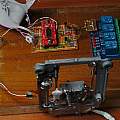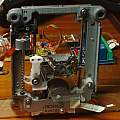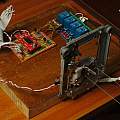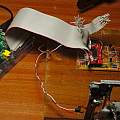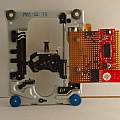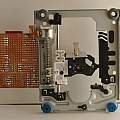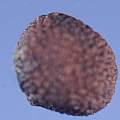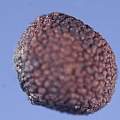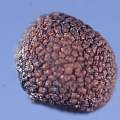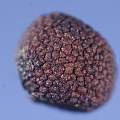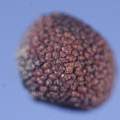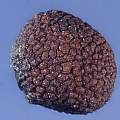By David Pilling.
In the Photographing Seeds page it was discussed how the depth of field is limited. One approach to this problem is 'focus stacking' where a number of photographs are taken with different parts of the object in focus and then combined by software to produce an image with all the object in focus.
To do this well requires being able to change the focus position precisely. It is possible to do focus stacking by changing the camera focus, by moving the camera or by moving the object.
There is a lot of material on the web describing building equipment for stacking which has provided inspiration.
The photos below show computer controlled movable seed stages made from the insides of DVD writers. In the version shown in the first four photos the stepper motor is controlled by a Raspberry Pi computer and an interface between the computer's GPIO bus and the stepper is provided by an 'Easydriver' microstepping controller. Resolution of the mechanism is 0.15 mm per step and microstepping splits each of these steps into eight. The version shown in the last two photos has a USB interface that may be used by Windows or Mac computers. The Pi can be seen to the left in photo 4. The blue blocks to the top right of the base in photos 1 and 3 are relays used to control the camera's shutter release. The Pi is running RISC OS, and a small BBC Basic program allows the stage to be moved as required or for a sequence of movements and photographs to be executed automatically. The Easydriver is configured to use 3.3 V for its control lines and the stepper motor is powered from 5 V - lower than recommended; but it worked. The seed is placed on a microscope slide held by a crocodile clip. Microstepping provides smoother motion; this is important if gravity is being relied on to hold the seeds in place.
At first thought a DVD mechanism should provide very high resolution considering how many tracks per inch DVDs have, however much of that resolution comes from a voice coil mechanism mounted on the stepper motor and worm drive.
This set of photos is of an Alstroemeria magnifica seed, in each of the first five the focus position changes by 0.3 mm, moving from back to front; it can be seen that only a piece of the seed is in focus in any one photo; the final photo is the result of combining the previous ones along with others half way between them using the program CombineZP. There are many other focus stacking packages.
The seed stage is also useful for 'focus bracketing' - taking a number of photos of the same seed with different focus positions and then picking the best one. It has an advantage over changing the camera focus when using a lens to focus a grid behind the seed (as described in Photographing Seeds) because if the camera lens focus is fixed the lens focusing the grid can also remain fixed.
